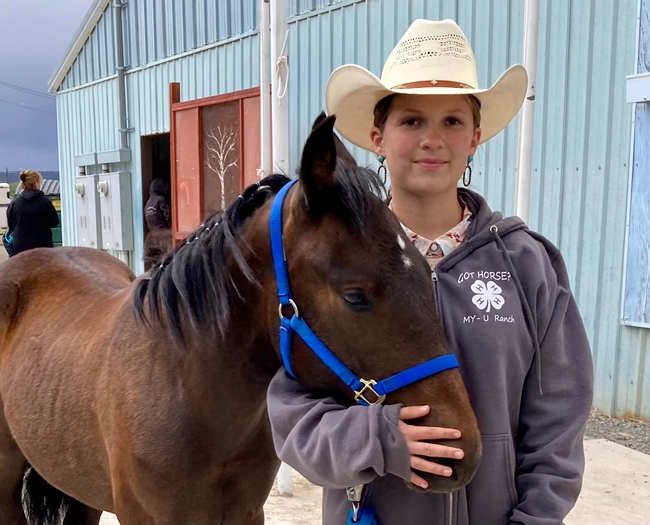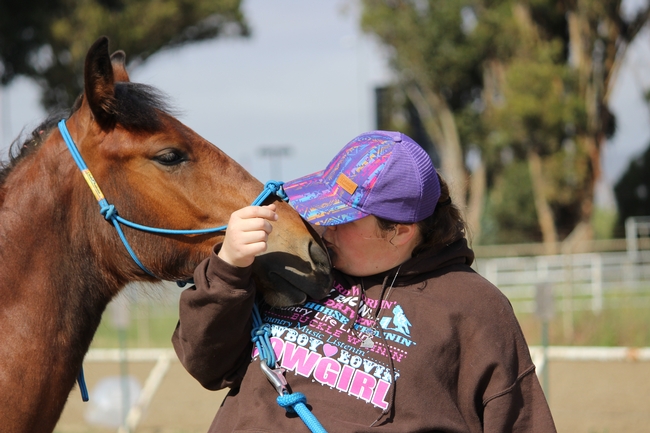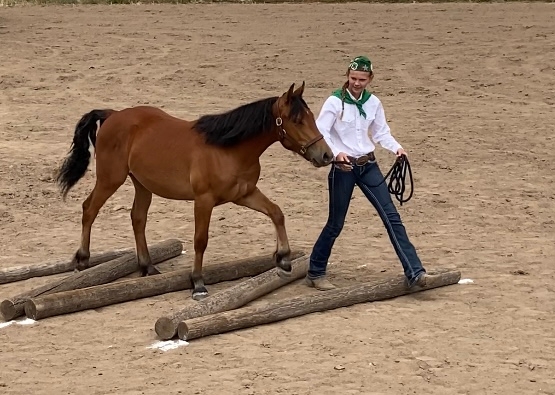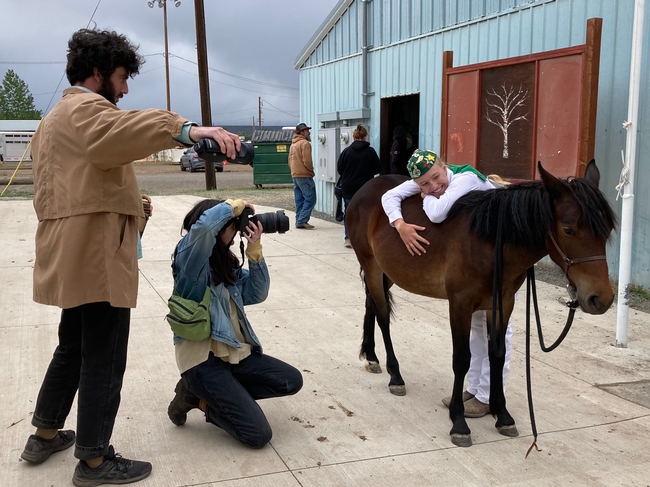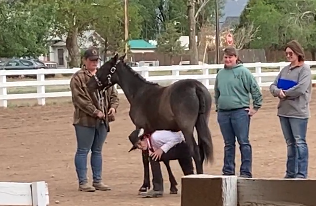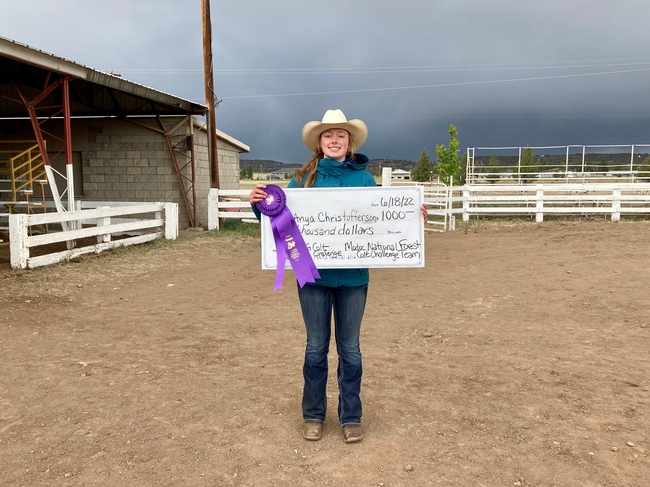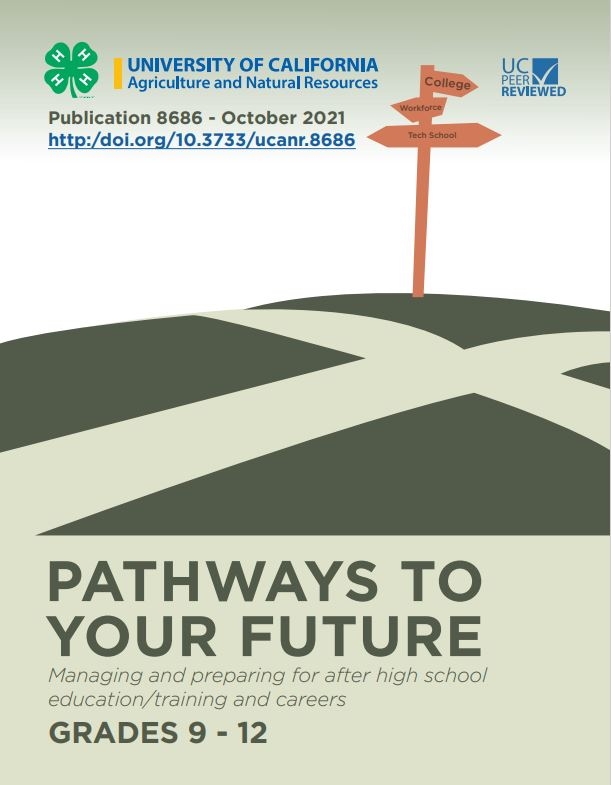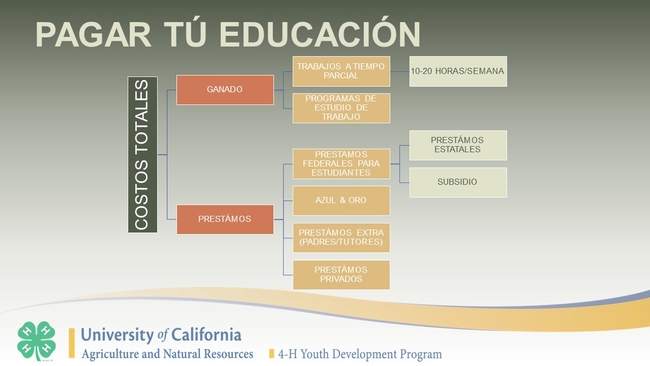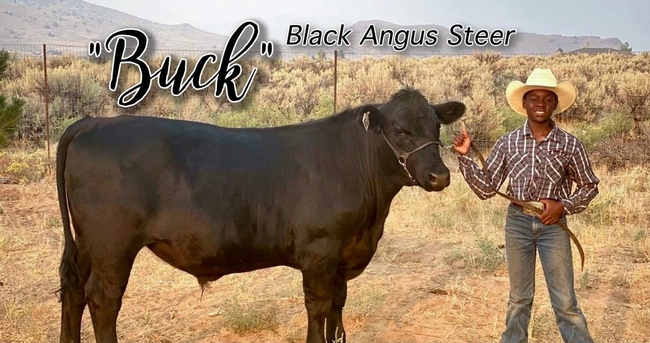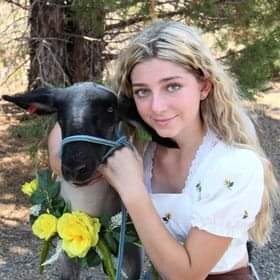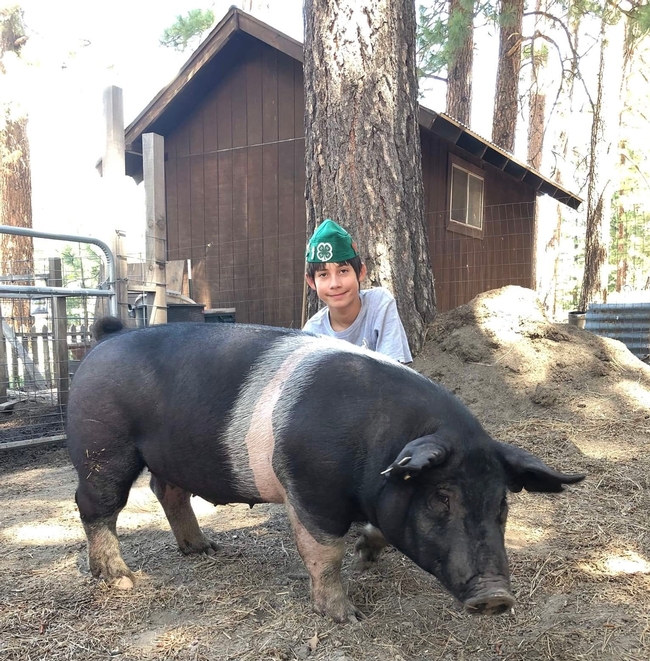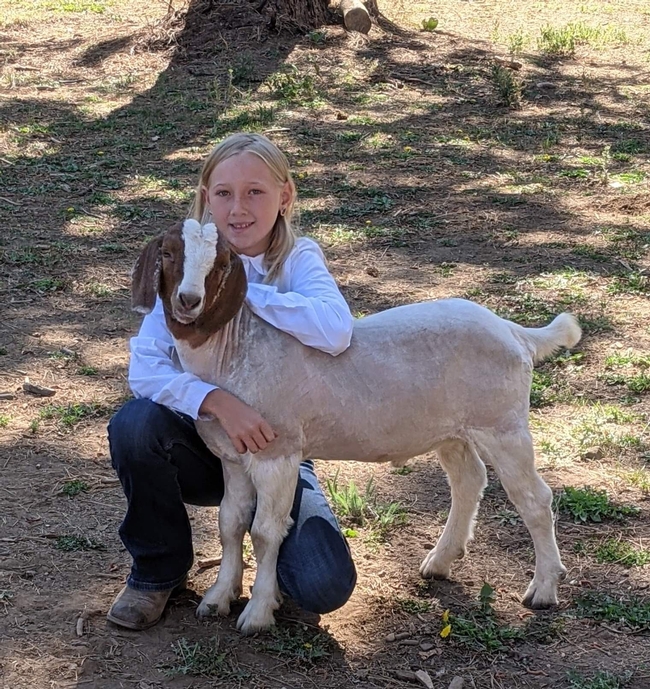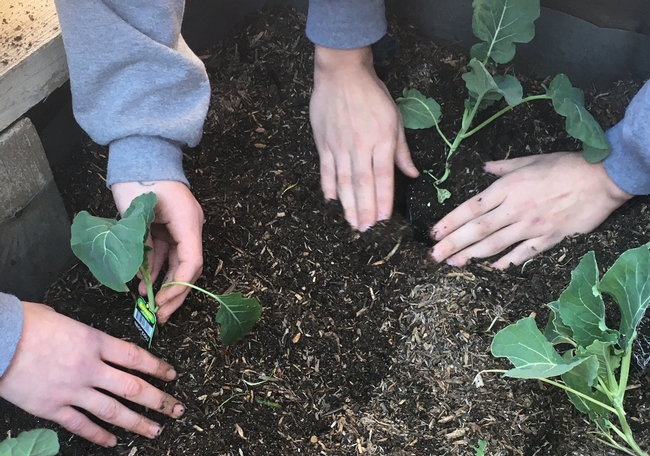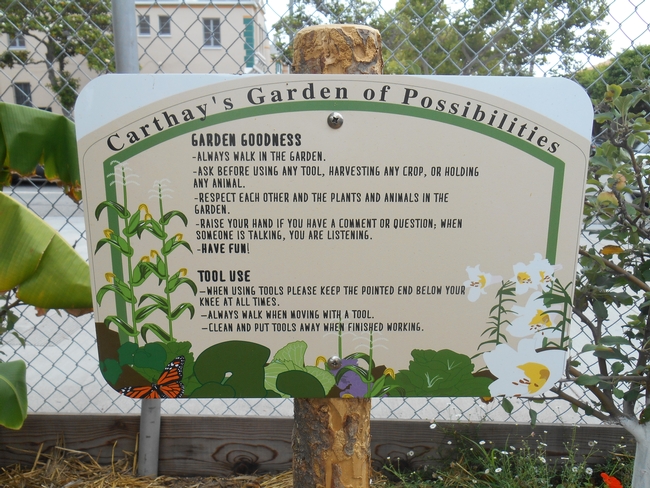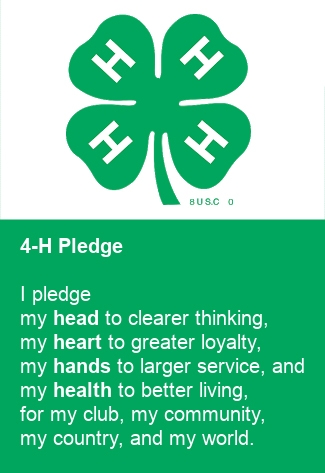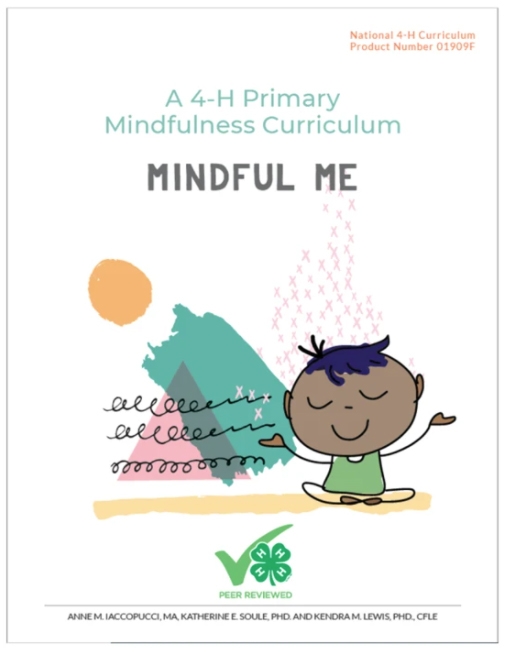Posts Tagged: 4-H youth development
Wild horses and youth learn patience and trust from each other
“There is much we can learn from a friend who happens to be a horse.” — Aleksandra Layland
“Training mustangs is just so much fun,” said Aubrielle, as a chestnut-colored filly named Zuri nuzzled the 4-H member from Shasta County. Six months earlier, the young wild horse was wary of being touched. Now she was sporting accessories in her styled mane that matched the teenager's turquoise jewelry.
Over the past few years, UC Cooperative Extension in Modoc County has partnered with Modoc National Forest to provide public outreach and education to support the placement and care of wild horses from Devil's Garden at the northeastern corner of California. Adopting foals reduces overpopulation of wild horses, which can harm rangeland and the health of the mustangs themselves.
This year Laura Snell, UC Cooperative Extension livestock and natural resources advisor in Modoc County, assigned weanling wild horses to 40 youth between the ages of 9 and 19 from all over the state. The mustangs were 4 to 6 months old in January when they were picked up in Alturas and taken home by California 4-H and FFA members, who feed and care for them.
“The moment when I got to touch him for the first time is probably one of the biggest parts of training as well as my progress with him,” said Morgan of Monterey County, who spent hours in the stall with Bowie trying to gain his trust.
“It was really amazing to me that I was able to touch him on day 5,” she said. “In the videos I watched leading up to getting him, most of the time it took one week to three weeks for the people in the videos to touch their wild mustangs. At that moment is when you really start to make that bond with a wild mustang.”
“The moment when I got to remove his tag was a huge part as well because at that moment you know that the mustang trusts you enough that he is letting you get that close to remove the tag,” Morgan said.
The young trainers teach the horses to wear a halter, to load and unload from a horse trailer and to navigate through obstacles. Some participants also work on tricks such as laying their horse down, walking the horse backward and walking under the horse. In June, the participants gathered in Alturas to show their progress.
“It provides them an opportunity to seek out adult mentors who are horse trainers, learn responsibility, and learn a variety of things about caring for a wild horse and learning more about themselves in the process,” said Snell.
“We find that the youth do very well with wild horses. It's really a two-way street, with the horses learning just as much as the youth are in the six months they are in training,” she added.
Sisters Kailey and Maddi in San Benito County both adopted weanling horses. Removing the tag after about three weeks was a turning point for Maddi and her horse Fiona.
“The significance of getting the tag off was we hadn't been able to get near her at all,” said Maddi. “She had some aggression toward people out of fear. So getting past that, getting to the point where she trusted me and I could get that halter on her and get close enough to get that tag off was just a huge achievement. After that, once she trusted me, she started doing really, really well and flying through her training.”
Because wildfires are part of life in California, she taught Fiona to step over flames so she won't be afraid if they need to evacuate, Maddi told KSBW reporter Brisa Colon.
“It has been amazing to be able to share this experience with another very close family,” said Aubrielle's mother Ashley Phipps. “Our daughters have gone through the entire journey together starting with visiting the corrals to pick horses together, all the way through the training process. My daughter is older than Brooklin and has been a great mentor to her, teaching Brooklin and her horse along the way. It has been such a confidence builder for my daughter! Our girls will never forget this experience!!! And I loved every moment of watching them grow through the ups and downs. This program is such a blessing.”
To qualify for the program, applicants must fill out an application which includes being enrolled in a horse program such as the 4-H Equine Project, show they have facilities and feed for the animals, designate a mentor and have their parents' approval.
The trainers and their horses competed in the Devil's Garden Colt Challenge on June 18 in Alturas, vying for awards in halter, showmanship and obstacle course with youth from 13 counties participating. Prizes totaled over $3,000.
New publication helps youth evaluate post-high school ‘pathways’
Free downloadable curriculum recognizes diverse family circumstances
Not all young people are on an expressway to a four-year college, and a new publication from University of California Agriculture and Natural Resources acknowledges their many circumstances and possibilities. The “Pathways to Your Future” curriculum invites high school-aged youth – and their families – to map their unique situations and passions before embarking on their own road.
Whereas similar guides might convey advice on a one-way street, this free download outlines a “hands-on” experience – in school settings or out-of-school programs – to help young people steer toward their best post-high-school education, training and career options.
“We wanted to make a youth-centered publication,” said co-author Claudia Diaz Carrasco, UC Cooperative Extension 4-H youth development advisor in Riverside and San Bernardino counties. “A lot of the content out there is based on delivering content to kids – just like information on college and careers; with ‘Pathways to Your Future', it's actually a skill-building curriculum so that youth are doing research and having critical discussions and making comparisons.”
In a pilot program that engaged 228 high schoolers across California (primarily 9th graders recruited from local 4-H programs), many participants said they appreciated that the curriculum presented a variety of pathways, including vocational education, non-degree certificate programs, community college, on-the-job training or entering the workforce – as well as four-year institutions of higher education.
“They have been liking that it doesn't start with ‘pick a college and get there,'” Diaz Carrasco said. “But really it's a self-reflection approach, where they start going back to what they're passionate about and what they think they're good at – and how much money they want to make in the future – and really just having that opportunity to know themselves before jumping into college or a career.”
To help them attain that clear-eyed perspective, the modules in the curriculum also debunk myths about the college experience and incorporate budgeting activities.
“This program gives youth the opportunity to constantly reflect on their learning as they get more data,” said another publication co-author, Lynn Schmitt-McQuitty, UC ANR's statewide 4-H director. “In the beginning, youth may have a very rigid or glamorized view of their future; the ‘Pathways' program grounds things and brings reality into the picture.”
Parents of the pilot-program participants – who predominantly identify as Latino – were also thankful for opportunities to engage in “real talk” with other parents about the wide array of options. Acknowledging the diversity of families across California, “Pathways to Your Future” also includes several sections in Spanish to make essential information more accessible.
“The parents need as much – or more – education on the processes, opportunities and expectations to support post-high school life,” Schmitt-McQuitty explained.
In addition to integrating families into discussions about their future, the curriculum also provides spaces for the high schoolers to participate in panel discussions with their slightly older peers, who recently went through their own decision-making journeys.
“The youth really appreciate seeing someone like themselves talking about what they went through, how they overcame obstacles,” said Diaz Carrasco. “They feel really inspired that there is a pathway for themselves.”
For assistance and support in bringing the “Pathways” curriculum to your community, contact your county's Cooperative Extension office, reach out to the local 4-H program, or email Claudia Diaz Carrasco at cpdiaz@ucanr.edu.
The other authors of the publication are Shannon Horrillo (College of Agriculture, Biotechnology, and Natural Resources, University of Nevada, Reno Extension), Darlene McIntyre and Nathaniel Caeton (UC ANR), and Martin Smith (University of California, Davis).
Despite Dixie Fire, Plumas-Sierra youth look for bids on livestock
Due to the Dixie Fire, the traditional Plumas County Fair was canceled; however, volunteers are working hard to make the Plumas-Sierra Junior Livestock Show happen. 4-H and FFA youth will show their prize-winning livestock this weekend at the Sierraville Roping Grounds. The showing of animals is scheduled to take place on Aug. 13 and 14 with the Junior Livestock Auction on Sunday, Aug. 15.
“We really hope junior livestock supporters in the region and beyond will raise their hands often this year to support the youth livestock producers of Plumas and Sierra counties,” said Megan Neer, Plumas-Sierra Junior Livestock Auction chairman.
“The kids have overcome the challenges of COVID and now face another year of canceled county fair due to the Dixie Fire,” Neer said. “Many of our youth have been directly impacted by the fire evacuations and some even have lost homes to the catastrophic fire. We are really looking to the community and beyond to support our youth during this difficult time.”
Profiles of participating youth can be viewed on the Plumas-Sierra Junior Livestock Auction Facebook page by clicking on “Photos." Interested buyers can participate in the livestock sale on Sunday, Aug. 15, and help reward the young people for their hard work in raising steers, lambs, swine, goats, rabbits, turkeys and other animals.
On the Plumas-Sierra Junior Livestock Auction website there is an option to donate to the Dixie Fire Relief Fund. There will be opportunities on sale day to support the 4-H members who were affected by the fire. In addition, there is an option for add-ons to support a child separate from buying an animal – for both 4-H and FFA members – that are in the sale.
“We would like to thank volunteers and sponsors for coming together on such short notice to host the livestock show event for my fellow 4-H and FFA exhibitors as well as myself,” said Kristin Roberti, Sierra Valley 4-H president, who has a steer entered in the event. “I will be joining over 100 other youth exhibiting livestock at the event this year, including a number of friends who have been impacted by the ongoing Dixie Fire and the Beckwourth Fire last month.”
UPDATE Aug. 24, 2021: The auction raised over $500,000.
"It was an amazing day, and life changing for many youth that were impacted the hardest by the Dixie Fire," said Tracy Schohr, UC Cooperative Extension livestock and natural resources advisor in Plumas and Sierra counties.
"Also, the day before the auction I worked with the Plumas-Sierra Cattlemen to host an impromptu dinner and auction to support ranchers impacted by the Dixie Fire - over $30,000 was raised that will go to ranchers who lost feed, hay, fences and many who have incurred tremendous costs the past month while the fire has burned around them," Schohr said.
"The weekend activities were a true reminder of the support for agriculture, support for youth in agriculture, value of community and the true power of social media."
For more information about the auction, visit plumas-sierrajla.com or contact Jane Roberti, advertising coordinator, at (530) 249-4036 or (530) 993-4097.
Farm-to-school projects planned for Los Angeles and Tuolumne counties
The University of California Cooperative Extension and its community partners have received nearly $500,000 from the California Department of Food and Agriculture to expand farm to school projects. The CDFA Office of Farm to Fork's 2021 California Farm to School Incubator Grant Program has awarded $8.496 million in grants to 60 farm-to-school projects throughout the state, including the following two UC Cooperative Extension projects.
Tuolumne Agricultural Connections Project
UC Cooperative Extension in the Central Sierra received $248,457 to work on the “Tuolumne Agricultural Connections Project” with Jamestown Elementary School District, Office of Tuolumne County Superintendent of Schools, Mother Lode Regional Juvenile Detention Center, Tuolumne County Sheriff's Office and local farmers.
UC Cooperative Extension Central Sierra will work with the sheriff's office to expand an existing farm education center on land owned by the county detention center, to provide educational opportunities for public school students and juvenile detention center students.
“We're really excited to offer more learning opportunities for young people in Tuolumne County,” said JoLynn Miller, director of UC Cooperative Extension in the Central Sierra. “At the farm, we will be able to teach students about growing food with hands-on activities and field trips and provide incarcerated residents with job training.”
UCCE and the Sheriff's Office plan to start a sustainable egg-laying operation to supply public schools and other public institutions with locally produced eggs. At the juvenile detention center, UCCE will provide monthly gardening and cooking lessons to juveniles. UCCE also will support school gardens through the School Garden Network and expand Harvest of the Month education and tastings to more public schools and to the juvenile detention center. School food service directors will get help increasing procurement of California-grown foods for their menus to reinforce the Harvest of the Month education. Through Kids' Day at the Market events, they plan to introduce public school students to farmers markets as places to buy healthy foods.
Local sourcing of food across Los Angeles
In Los Angeles County, the Urban and Environmental Policy Institute at Occidental College received a $250,000 grant. Occidental College is partnering with Los Angeles Unified School District, Los Angeles County Office of Education, Adventist Health Glendale Foundation, Big Green, Enrich LA, Garden School Foundation, Los Angeles Food Policy Council, National Health Foundation, Sage Garden Project, Seeds to Plate, Sustainable Economic Enterprises of Los Angeles and UC Cooperative Extension in Los Angeles County.
The “Farm to Classroom: Sourcing Local for Farm to School Education Across Los Angeles” project will help farm-to-school educators purchase fresh produce from local farmers markets for in-class taste tests, garden lessons and recipe demonstrations. They will also offer teachers farm-to-classroom educational materials on food systems, farmers and agriculture, featured produce items and nutrition.
"We are thrilled and excited to be a partner on the project,” said Keith Nathaniel, UCCE director and 4-H youth development advisor in Los Angeles County. “Cooperative Extension in Los Angeles County is poised to provide quality educational materials that support the farm to school learning continuum for young people. Cooperative Extension will continue to build on its expertise to develop relevant impactful materials designed to engage learners to meet their educational outcomes."
A “Los Angeles Harvest of the Month” calendar will be designed for Los Angeles Unified Food Services and be available to others in Los Angeles County to use. The calendar will feature local produce items that are highlighted in the educational materials and available to buy through a purchasing app. Coordination between school food services and teachers will help Los Angeles Unified align their lessons and garden planting schedules with foods offered in the cafeteria. The project team plans to launch a pilot of the program at select Title 1 schools, then analyze evaluation data from the pilot program and modify the program model as needed before sharing it with farm to school educators across LA County and offering an accompanying training.
The California Farm to School Incubator Grant Program focuses on supporting local and regional farm to school projects that promote nutrition education, sustainable food production and procurement, and high-quality student engagement through experiential learning.
4-H adds lessons on mindfulness to promote healthy living
The fourth H in 4-H stands for “health,” which members regularly pledge to better living. During the program's 118-year history, the focus of the fourth H has mainly been physical activity and eating right, but it's taking on new meaning in California with increasing understanding of the social-emotional benefits derived from mindfulness.
Mindfulness is the practice of paying attention in the present moment and accepting it without judgement. Benefits include reduced stress, better concentration, less depression and anxiety and a stronger immune system.
Even before the pandemic, the UC Cooperative Extension 4-H Healthy Living leadership team – Anne Iaccopucci, UCCE Healthy Living academic coordinator; Dorina Espinoza, youth, families and communities (YFC) advisor in Humboldt and Del Norte counties; and Marcel Horowitz, UCCE healthy youth, families and communities advisor in Yolo County – recognized that youth appeared to be struggling with anxiety and emotional challenges. An examination of published research showed that youth programs were successfully using mindfulness practices to help young people who had developmental challenges or behavioral disturbances.
With mindfulness gaining greater mainstream interest, Iaccopucci joined with YFC advisor Katherine Soule, and University of New Hampshire, Durham, youth and family resiliency state specialist Kendra Lewis to investigate the use of mindfulness for growth and development in people without serious conditions, but struggling with challenges of modern life.
“The 4-H Healthy Living team wanted to make sure we were addressing the social-emotional development of young people, so we investigated how we can integrate mindfulness into our programs,” Iaccopucci said.
Mindfulness retreat
The team designed an annual weekend UC 4-H Mindfulness Retreat for youth and adults to build skills in mindfulness, stress management, relationship building and community connection. Three-day retreats were held over four consecutive years in Cambria, a peaceful beach community on California's Central Coast.
Lessons in yoga, art and nature exploration were combined with quiet reflection, socialization and emotional-regulation training led by experts with extensive knowledge in those mindfulness methods. “Hangout time” was electronics-free; participants were encouraged to spend time getting to know one another or practicing self-reflection.
A survey completed by participants at the end of the retreats helped leaders improve the activity year-to-year and gauge the program's success. Both youths and adults said they were satisfied with their experiences at the retreat, wanted to participate again and would recommend the experience to others, the retreat team reported in the August 2020 issue of the Journal of Extension.
As part of the completion survey, the youths and adults were asked to provide examples of how their new skills and knowledge in mindfulness can be applied in their daily lives, how it can be applied in 4-H, what they liked best and what they would change.
One youth mentioned, “Giving skills back to my 4-H club, or when I am stressed, going back to what I learned.” An adult said, “More present for my family. I will be more mindful in my daily life! Take at least 6 deep breaths in my daily life or day to day.”
One youth said, “I can pass my new knowledge down to the youth in my county or across the state.”
Another youth wrote that the best part was, “Learning how to stay calm and having fun.”
To read the full report on the retreats, see Engaging Teens and Adults in Mindfulness: The University of California 4-H Mindfulness Retreat.
Mindfulness curricula
Hosting a mindfulness retreat is a vast undertaking that may not be practical for individual 4-H clubs or other youth groups. To extend the benefits of mindfulness to more youth across California and the nation, the Healthy Living Team developed curricula that can be used by 4-H clubs and other youth-serving organizations – such as Girl Scouts, Boy Scouts, Boys' and Girls' Clubs, etc.
The first curriculum, Mindful Me, includes 10 lessons designed to be presented by teenagers to children 5 to 8 years old. Created by Iaccopucci, Soule and Lewis, the curriculum was inspired by children's books that teach readers to regulate emotions and respond appropriately.
For example, one lesson focuses on naming and describing feelings. The lesson explains that feelings – such as happy and sad – visit for a time like houseguests, and centers on a book called “Visiting Feelings” by Lauren Rubenstein. The author suggests that feelings should be viewed with “wide open eyes.”
“Is it bright like the sun, dark like the rain, or is it a look you can't even explain?” says the text. “If you listen to what your body can say, you'll find that your feelings are really OK.”
Each lesson includes a connected activity. For naming and describing feelings, the children can choose a feeling to explore, write it down and draw what the feeling looks like – a prickly plant, a bouncy ball, a present?
The curriculum is available on the Shop4-H.org website for $39.95. Videos were created to accompany the curriculum and are available on the eXtension website with the purchase of the curriculum. (Visit https://campus.extension.org/enrol/index.php?id=1839, create and account and use the enrollment code California to view the videos.)
A second curriculum, designed for older youth and adults, is Mindful Mechanics. The curriculum includes 10 activities with mindful objectives, such as walking a labyrinth, mindful eating, and creating cyanotype sunprints. The overall program aims to promote mindful practices that lead to improvements in managing one's own goals, developing a sense of self, time management, stress management, emotional regulation, and mindful eating practices. 4-H Mindful Mechanics can also serve as a training for teens that would like to lead lessons from the companion curriculum, 4-H Mindful Me, through a ‘teens as teachers' approach.
The curriculum is available on the Shop4-H.org website for $39.95.
A three-page 4-H Mindfulness Project guide is available for free download. The guide is designed for 4-H Clubs, but it is useful for any teacher or leader to share the benefits of mindfulness. Some suggested activities include creating a portfolio of favorite places that help the participants feel relaxed, start a gratitude journal to document the things they are grateful for, explore food using all five senses or host a self-reflective nature walk in the local community.
The publication also suggests how youth can develop leadership skills related to the mindfulness project by becoming a Healthy Living Officer, a junior or teen leader for a mindfulness project and plan and prepare a mindfulness exercise for a community club meeting.
To learn more about the 4-H Youth Development program in local communities across California, see http://4h.ucanr.edu/

